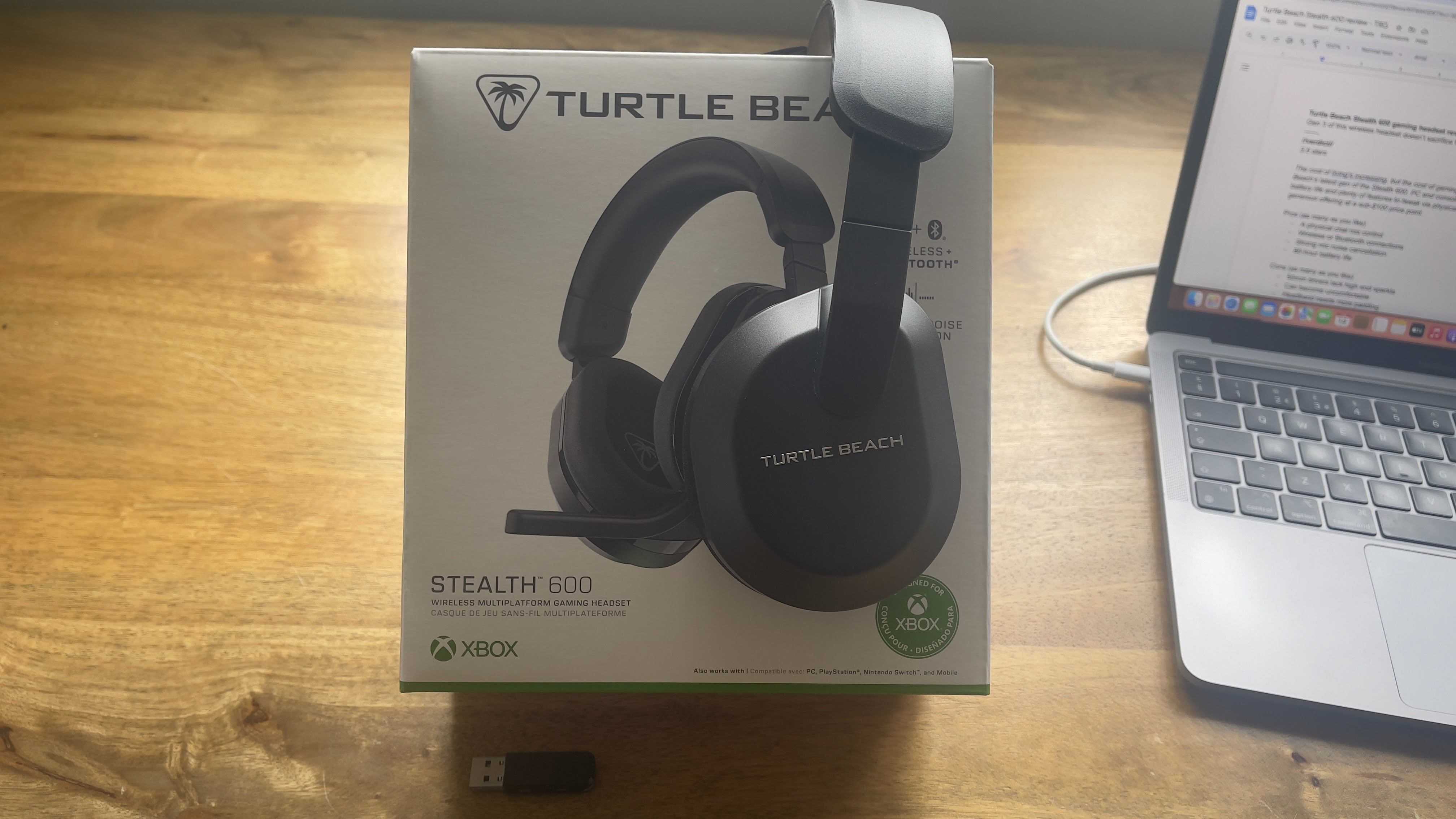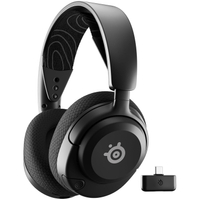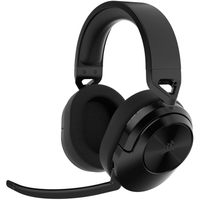TechRadar Verdict
The cost of living is increasing, but the cost of gaming holds firm with Turtle Beach’s latest gen of the Stealth 600. PC and console compatibility, a massive battery life, and plenty of features to tweak via physical or app controls – it’s a generous offering at a sub-$100 price point.
Pros
- +
A physical chat mix control
- +
Wireless or Bluetooth connections
- +
Strong mic noise cancellation
- +
80-hour battery life
Cons
- -
50mm drivers lack high-end sparkle
- -
Can become uncomfortable
- -
Headband needs more padding
Why you can trust TechRadar
Turtle Beach Stealth 600: one-minute review
It’s easy to make a premium headset - just pile on the features and get everything hand-made by artisans. Hitting the sub-$100 price point in 2024 as the Turtle Beach Gen 3 Stealth 600 does is much tougher. But if you’re keen to stick to that budget for your next headset, Turtle Beach really has your back here.
It’s included an 80-hour battery life and some very welcome physical controls for chat mix, volume, EQ presets, and a quick swap button between 2.4GHz wireless and Bluetooth 5.2 connections, along with plenty more tweaking via the Swarm mobile or desktop app.
The feel and comfort do give away that concessions have had to be made in order to hit this pricing, and you get that same sense from the overall sound, which falls short of great and lands merely at good. But that’s to be expected.
Certain features like the smart mic noise cancellation and mic EQ presets feel like they’re visiting from a higher-priced model, and the easy multi-device compatibility across PC and consoles is a real asset. If you can plug the full-size USB dongle into it, the Stealth 600 can work with it. You might not get all the features on every device, but for the price, this is a real workhorse of a wireless gaming headset.
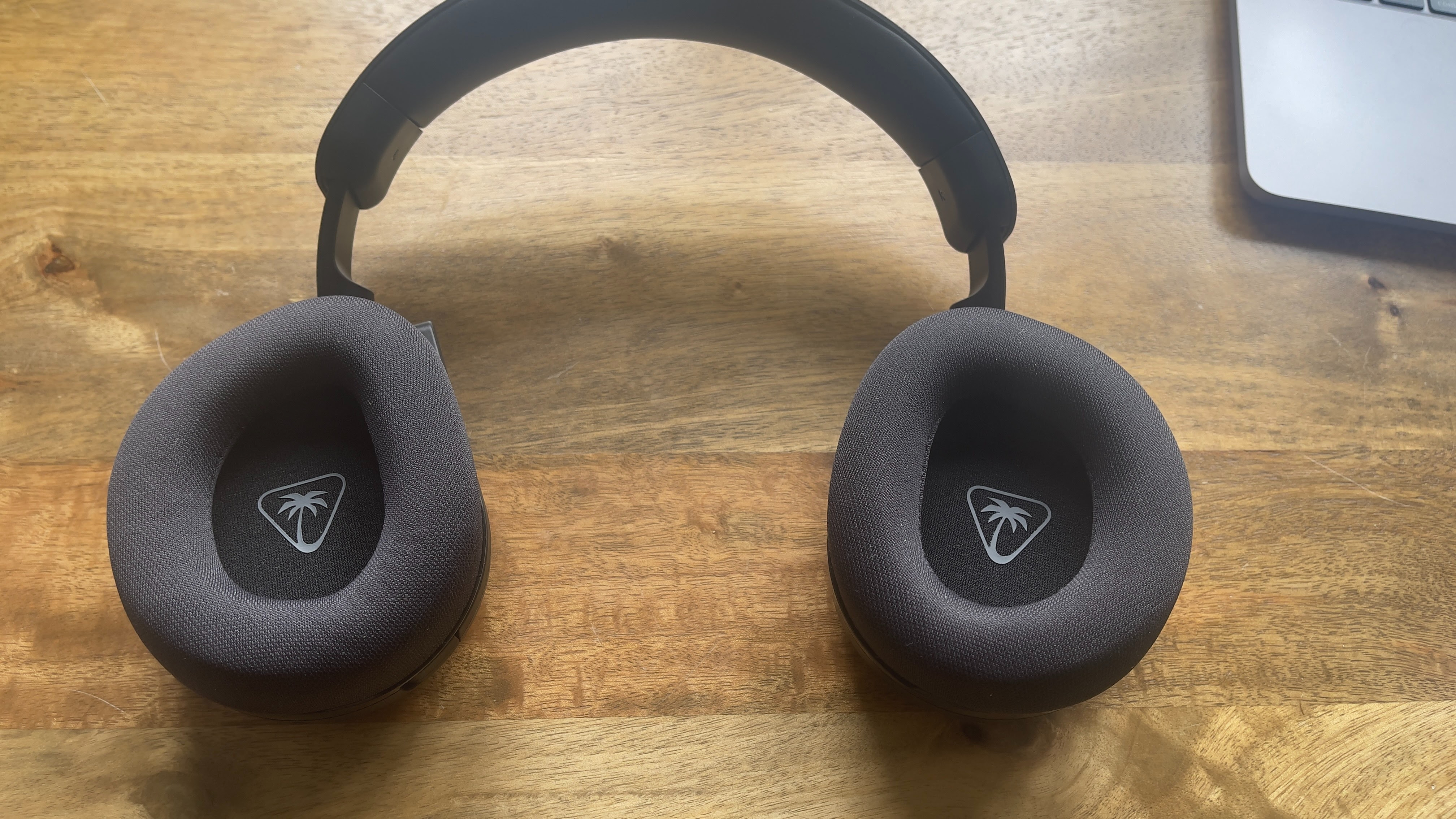
Turtle Beach Stealth 600: Price and availability
- List price: $99.99 / £99.99 / AU$179
- Wireless headsets don’t get much cheaper
- Stacks up well against Corsair and SteelSeries at this price
It’s possible to find a wireless headset for less than the Stealth 600’s MSRP - but not by much. The Corsair HS55 Wireless Core is available for $10 / £10 less, while the SteelSeries Arctis Nova 5 headset is comparable at a slightly higher $130 / £130.
As always, UK gamers are slightly fleeced by conversion rates here but the convention of parity between US and UK pricings didn’t begin with Turtle Beach.
Turtle Beach Stealth 600: Specs
| Price | $99.99 / £99.99 / AU$179 |
| Weight | 10.6oz / 301g |
| Compatibility | PC, Xbox, PlayStation, Nintendo Switch, Android & iOS |
| Connection type | Type A Wireless (2.4 GHz), Bluetooth 5.2 |
| Battery life | 80 hours |
| Features | AI noise reduction, 10-band EQ presets, remappable controls |
| Software | Swarm |
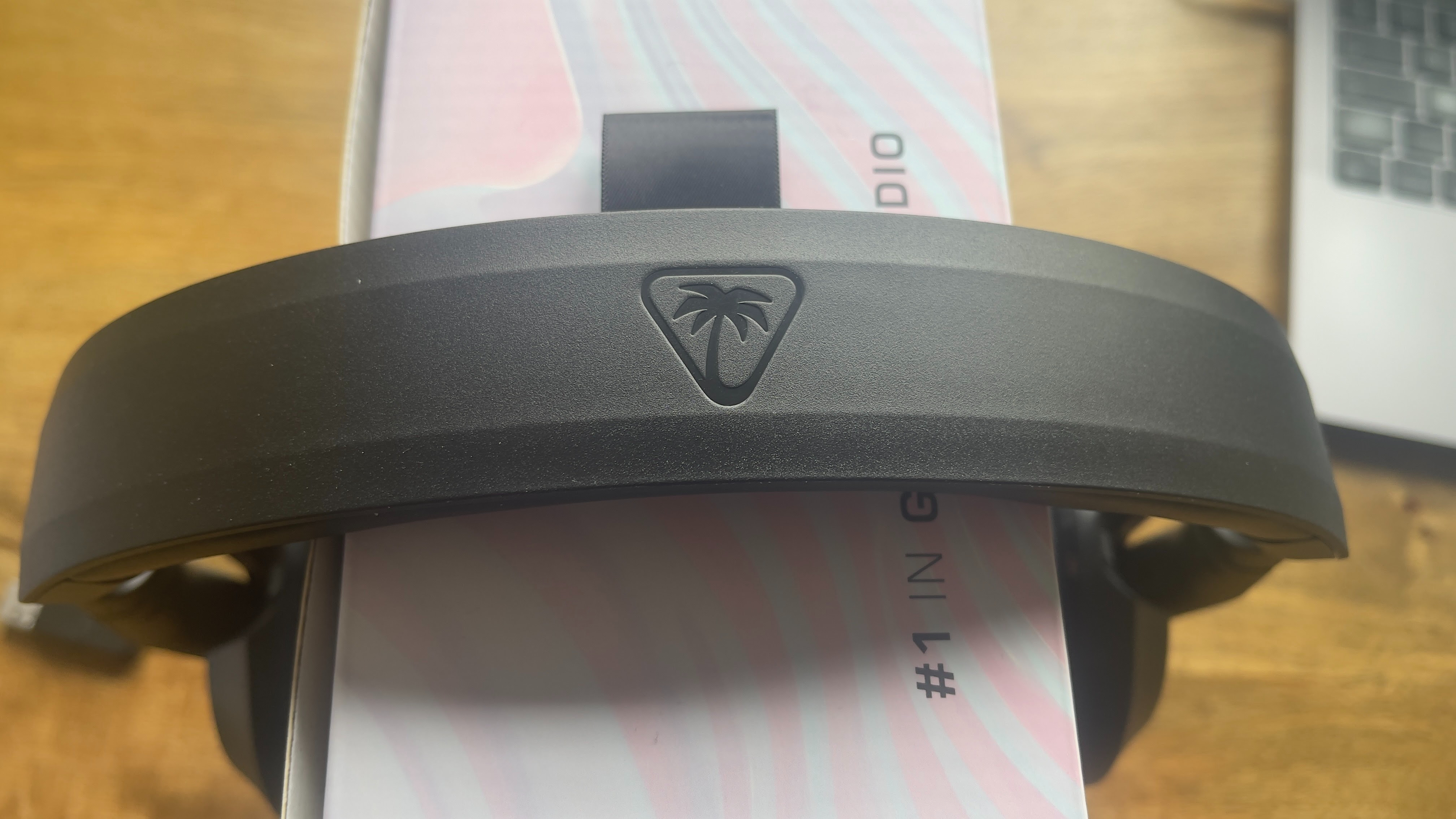
Turtle Beach Stealth 600: Design and features
- Smart but exciting looks
- A bit tight
- Plenty of controls
Let’s be clear off the bat: if you look for tells that this isn’t a premium headset, you’ll find them. Construction materials are exclusively plastic and pleather, and the feel of the foam padding around the earcups and inside the headband isn’t quite as spongy and luxurious as you find about $50 further up the market.
How it stacks up against similarly priced models from its rivals is more revealing, though. Although it’s similar in appearance to Razer’s Blackshark V2 Pro for Console, Razer edges it for feel and aesthetics to our eye. The same is true of the Steelseries Arctis Nova 5, which also offer greater comfort. The closest comparison can be drawn between these and the Corsair HS55 Wireless Core since they’re both chunky and robust designs with a blackout color option, but in our subjective view, the HS55’s variation of materials and finishes edges it.
It’s not the most attractive wireless headset, then, but it feels built to last. It can withstand a good deal of pulling and twisting force without revealing any obvious weak points and, returns to its shape. There’s also very little noise when moving the earcups around, with no discernible creaking.
There’s an unusually snug fit to this headset. The clamping force is definitely on the tight side, and the earcup mounting design to the headband means that there’s more of that force being exerted on the lower half, below your ear, than on the upper half. We found that we started to notice that pressure after a couple of hours of play.
We also became aware of the headband’s pressure on our head at around the same time each play session. There’s not quite enough padding here, and although this certainly isn’t a heavy headset at a shade over 10.5oz / 300g, you do become aware of the contact points quite quickly.
Happily, though, it’s feature-rich for the pricing. The rear of the left earcup has power, mute, EQ preset select, connection switch, and pairing buttons, along with two notched wheels for volume and - the holy grail - chat mix. These are remappable too, via Turtle Beach’s Swarm app giving another string to its bow as a PC gaming headset.
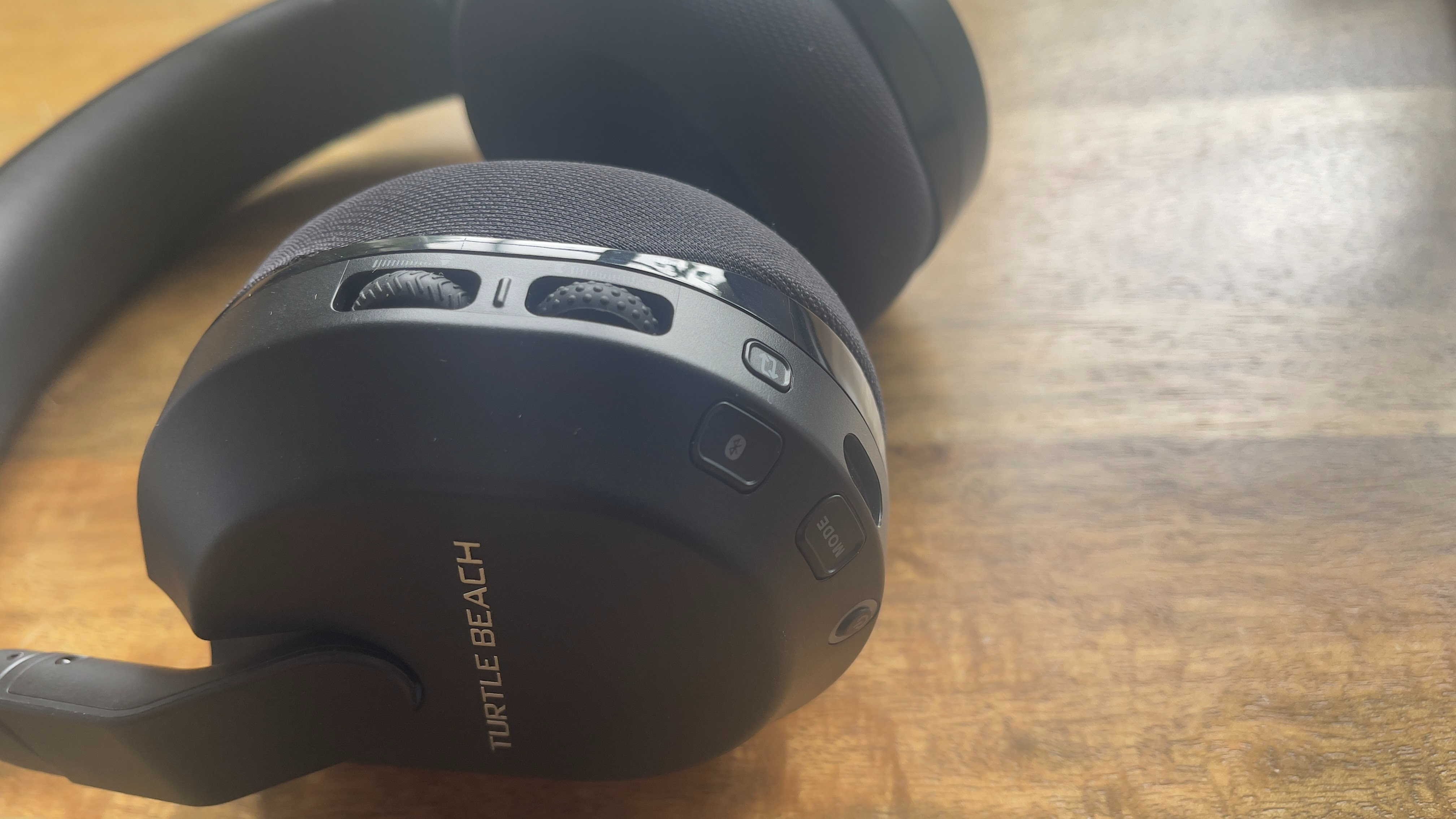
Turtle Beach Stealth 600: Performance
- Nice rounded mic audio
- AI noise cancellation works well
- EQ tuning favors bass and mids
Does this value-end Turtle Beach headset feature Stealth-wealth when it comes to audio quality and gaming performance? Well, it gets the job done admirably for the price.
The tuning of its 50mm drivers is definitely geared towards accentuating the low mids and lows, creating a powerful bass response that sounds visceral and immediate in shooters and captures the throaty roar of a car’s engine nicely.
However, that authoritative response at the lower end of the frequency response spectrum means a compromise higher up. Pricier headsets capture a bit more sparkle from sounds like breaking glass or voices. Compared with both the Arctis Nova 5s and the Blackshark V2, we noticed a slight loss of detail in the mix when listening to music which we couldn’t relocate by cycling the 10-band EQ presets. Turtle Beach’s ‘superhuman hearing’ preset is part of that lineup, intended to amplify important sound cues in shooters and drown out the rest. Perhaps an elite-level player might find this useful, but in our usage it sounded too tinny to put up with for longer than a couple of rounds.
Let’s not lose sight of the intended purpose, though - it’s a multiplatform headset for gaming, and it does that job well, producing clear and at times bombastic sound whether connected via 2.4GHz wireless or Bluetooth 5.2 on either our PC, iPhone, or being deployed as a PS5 headset. There’s a trend towards either-or wireless connections rather than simultaneous wireless and Bluetooth at the moment and the Stealth 600 Gen 3s follow it - but it’s handy to have the connection switch ready at the press of a button.
The Swarm app on PC or mobile gives you a lot of tweaking options, from the amount of noise cancellation to custom EQ presets. We were particularly impressed by the AI-assisted noise cancellation, and by the quality of the mic audio itself.
Finally, plaudits for the 80-hour battery life. That’s a huge number for this price, and it held true during our testing period.
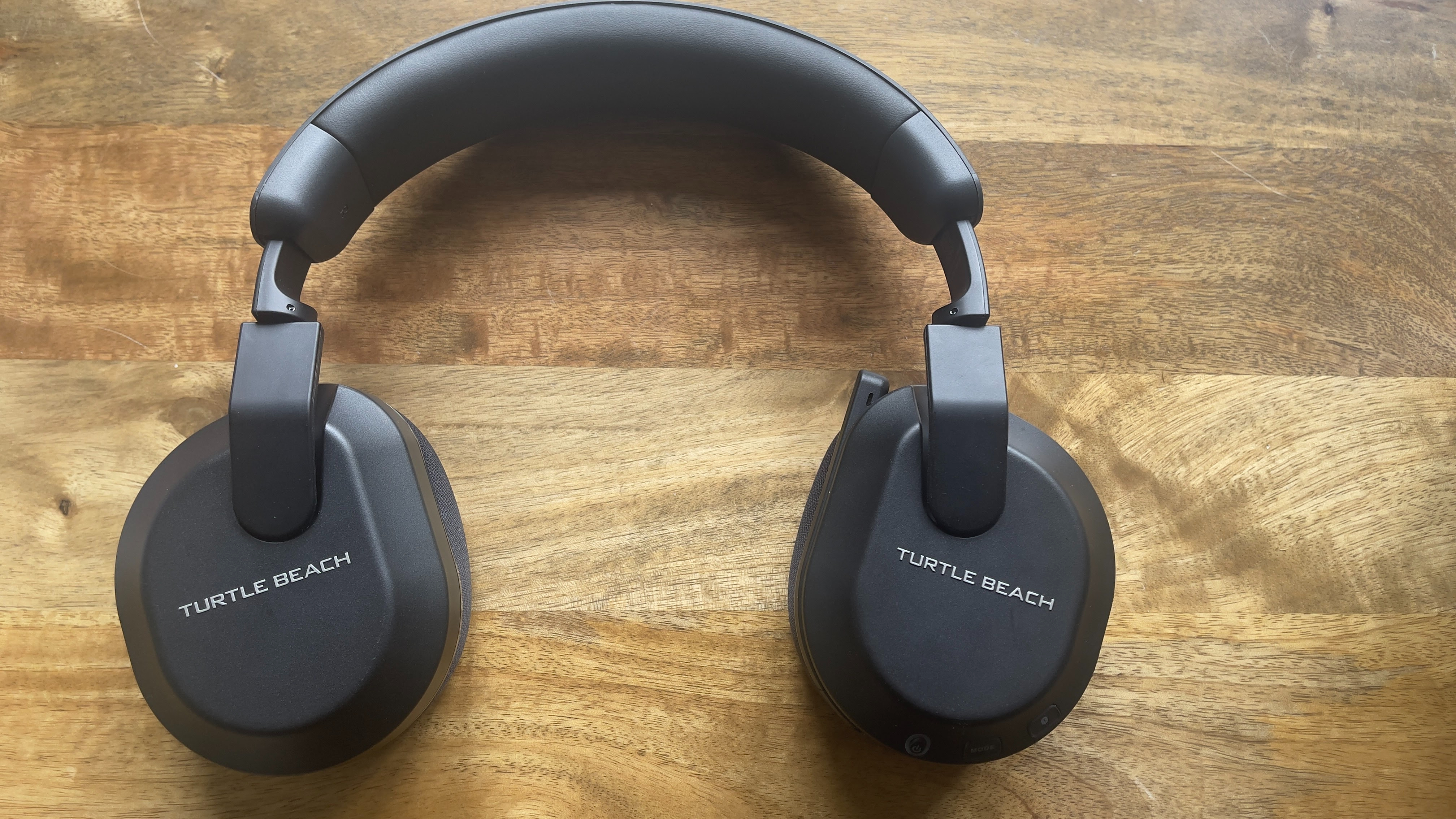
Should I buy the Turtle Beach Stealth 600?
Buy it if...
You’re looking for a great-value headset for under $100
There are a lot of features here for the price, and Corsair’s HS55 Wireless Core is the only other contender that can go toe-to-toe with it on specs.
You want to use one headset for multiple devices
2.4GHz wireless and Bluetooth 5.2 connectivity across PC, consoles and mobile make it easy to connect to your whole ecosystem.
You play somewhere noisy
If your Discord buddies are always complaining about your keyboard sound or background noise, the AI-assisted noise cancellation will do you a solid.
Don't buy if...
You’re an audiophile
Features and compatibility take priority over luxurious audio quality here, so if you can’t compromise on sound fidelity you should look elsewhere.
Small headsets tend to dig into your head
There’s a tight fit to this model, so you might want to test it out on your head before committing.
You can shell out $30-$40 more
The SteelSeries Arctis Nova 5 headset offers comparable audio and features with a little more comfort for a small additional outlay.
Also consider...
If the Turtle Beach Stealth 600 is flying under your radar, alert yourself to these other candidates.
| Row 0 - Cell 0 | Row 0 - Cell 1 | Row 0 - Cell 2 | Row 0 - Cell 3 |
| Row 1 - Cell 0 | Turtle Beach Stealth 600 gen 3 | SteelSeries Arctis Nova 5 | Corsair HS55 Wireless Core |
| Price | $99.99 / £99.99 / AU$179 | $129.99 / £129.99 / AU$139.95 | $99.99 / £89.99 (around AU$196) |
| Weight | 10.6oz / 301g | 9.5oz / 266g | 9.4oz / 266g |
| Compatibility | PC, Xbox, PlayStation, Nintendo Switch, Android & iOS | Xbox Series X|S, Xbox One, PS5, PS4, Nintendo Switch, PC, Mac, Mobile | PC, PlayStation, Nintendo Switch |
| Connection type | Type A Wireless (2.4 GHz), Bluetooth 5.2 | Wireless (2.4GHz via dongle), Wired (USB-C), Bluetooth 5.3 | Type A Wireless (2.4 GHz), Bluetooth 5.2 |
| Battery life | 80 hours | Up to 60 hours | 24 hours |
| Features | AI noise reduction, 10-band EQ presets, remappable controls | Companion App, 40mm Neodymium magnetic drivers, 360-degree spatial audio, retractable ClearCast 2.X mic, | iCUE customization |
| Software | Swarm | SteelSeries Arctis Nova 5 Companion App (iOS & Android), SteelSeries GG | iCUE |
SteelSeries Arctis Nova 5
Also featuring dual connectivity and multi-device compatibility, spending slightly more cash buys you increased comfort.
For more information read our full SteelSeries Arctis Nova 5 review.
Corsair HS55 Wireless Core
Not as multi-device compatible nor as feature-rich as the Stealth 600, Corsair’s wireless budget offering is nonetheless a comfortable and even cheaper alternative.
For more information read our full Corsair HS55 Wireless core review.
How we tested the Turtle Beach Stealth 600
- Over a week of daily use during testing
- Used with competitive games, retro titles, and Discord chat
- Battery life and recharge time measured
We used the Turtle Beach Stealth 600 Gen 3 as our daily drivers for a full week during testing, keeping tabs on battery life and the USB-C charge time while indulging in PUBG sessions, keeping in comms via Discord, and checking back in with old favorites Unreal Tournament ‘99 and Quake 3 Arena.
First reviewed June 2024.

Ad creative by day, wandering mystic of 90s gaming folklore by moonlight, freelance contributor Phil started writing about games during the late Byzantine Empire era. Since then he’s picked up bylines for The Guardian, Rolling Stone, IGN, USA Today, Eurogamer, PC Gamer, VG247, Edge, Gazetta Dello Sport, Computerbild, Rock Paper Shotgun, Official PlayStation Magazine, Official Xbox Magaine, CVG, Games Master, TrustedReviews, Green Man Gaming, and a few others but he doesn’t want to bore you with too many. Won a GMA once.
